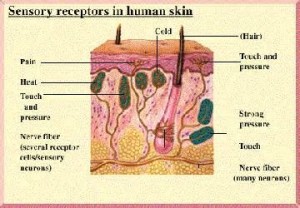 To continue from my previous article Touch, the most ancient sense I will focus today on why physical touch is so beneficial and good for us.
To continue from my previous article Touch, the most ancient sense I will focus today on why physical touch is so beneficial and good for us.
Actually the questions are:
- why has touch an impact on reducing our level of stress?
- why does touch increase our sense of well being?
Let’s start with the importance of touch by saying that many studies have been conducted after World War II on the effect of touch deprivation in children living in orphanages. At that time, people believed that the basic conditions for children to survive were to have enough food and a roof over they head. Scientists proved that touch is essential for our development. Children deprived from touch did not develop well and they were more easily to be sick and even to die.
The touch “stimulates the central nervous system, promoting the secretion of endogenous opiates (endorphins and related compounds that make us feel good). The result of both pleasure and relief [in case of pain]*, with measurable reduction of anxiety and stress levels and strengthening of the immune system, whose functioning is inhibited by high stress levels”. (ref 1)
The experience of being touched can be rare nowadays. We are living in a culture that is not touch oriented but more touch-averse. So it becomes very important to pay attention to our skin, and to maximise the experience of touch by being aware and present in the moment.
The skin contains a vast network of nerves involved to maintain and protect the body’s internal environment. That means, the body is constantly adapting to what surrounds us by modifying its basic functions: respiration, digestion, circulation. What our skin perceives is hence participating to the reaction of stress. And it tells us about specifics how we react to stress.
- produced within the body and visible outside (e.g., skin problems)
- action we do to ourselves (e.g., biting nails, biting lips)
- reaction to external touch (e.g., feeling tense, perceived as pain despite being a light or medium touch)
Read this paragraph and notice if it resonates with you:
“Children growing up in this culture [touch-averse]* adapt by learning to express their emotions through words and facial expressions rather than by touch. But such accommodation comes at a cost, as older children and adults suffer from awkwardness in demonstrating physical affection and ineptness in body relationships with others in general. From the point of view of comparative primatology, touch-averse cultures are an anomaly, and the bouts of depression, anxiety, and more serious forms of social pathology among individuals who live in them are entirely predictable”. (Ref 2)
It appears evident that an efficient way to deal with stress or anxiety is to focus more on our physical being, to focus more on our body. To experience it as not only a tool, but as a fundamental part of yourself.
Next time you go for a massage, work out, sit outside enjoying the sun or you take a walk in the forest, take some deep breaths:
- Let the effect of your activity penetrate the inside of you.
- Pay attention to the process of relaxation in the body and the mind. Encourage it by letting go the extra efforts you may notice in your muscles.
- Allow the sensations that will emerge at the moment being present.
- Give yourself enough time to digest what needs to be digested or to regenerate during this process. It may take only 5 minutes!
Feel free to contact me if you want support to bring more of this experience in your daily life!
I am happy to help you!
* Add by the author
Rer 1: Skin a natural history, Nina G. Jablonski, University of California Press, p 111
Ref 2: Skin a natural history, Nina G. Jablonski, University of California Press, p 110
Picture